Films Inspired by Real Stories Turned Out To Be Fabrications
A much bigger audience is drawn to the idea of watching a film that’s based on a true story. They feel it is something they can readily relate to, and they’re excited to learn about history in a fun way. Knowing that the events that transpire in the narrative are real makes audience members feel that such things could happen to them too. This raises the level of interest in seeing such films.
Unlike fictional movies, the general assumption is that none of the scenes were invented or falsified. The story as a whole may be intact, still true to a point, but many of these films have been altered for dramatization purposes. The filmmakers are lying, in a way, by creating Hollywoodized plots that appeal to our thirst for drama, intrigue, and neatly tied up stories. Let’s take a look at some of the worst offenders.
The Incidents of "Fargo" Were Separate
More than two decades after the movie Fargo was released, the truth behind the story was revealed. It turns out that most of the events that played out in the 1996 film were a product of the imagination.

gramunion
In an interview with The Huffington Post, writer Joel Coen revealed that it was based on a mashing together of two real incidents: a guy defrauding GM Motors in the ‘60s and a man who murdered his wife in Connecticut. The stories were blended and heavily fictionalized.
"Argo" Diminished Canada’s Role
This historical drama about the Canadian Caper back in 1979 has been lauded by movie critics for its sustained intensity in depicting how six US diplomats were rescued from Iran and harbored in the home of the Canadian ambassador.
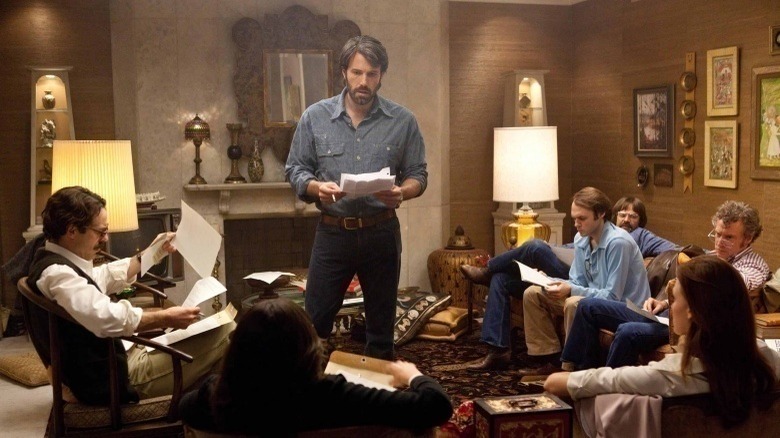
pikabu
However, the extent of Canada’s role in their escape was diminished in the film, giving more credit to the CIA. The events happened during President Jimmy Carter’s term, and the former president himself didn’t hesitate to comment that 90% of the ingenious plans were devised by the Canadians.
Exaggeration in 1993 film "Rudy"
Daniel Ruettiger’s unquenchable desire to play football for the University of Notre Dame is beautifully portrayed in the sports biography film Rudy. It has been deemed one of the best sports movies of all time.

mycentraljersey
Even this biographical story has some stretched scenes, specifically in the part where Rudy’s teammates convinced their coach to let him play by laying down their jerseys on his table. Another fictitious moment comes in the climactic scene where the crowd keeps chanting Rudy’s name before he enters the field.
The Inaccuracies of "Foxcatcher"
From the final cracks of John Du Pont’s revolver that killed Dave Schultz, it actually took days before the authorities could capture the billionaire murderer. The movie Foxcatcher does away with all that, turning the end of the otherwise biographical story into a work of fiction.

Source: Indiewire.com
The story focuses on Du Pont’s enthusiasm for supporting (wrestling) Team Foxcatcher and skips the period where he announced that he was terminating his annual financial contribution worth $400,000. Also, Mark (Dave’s brother) didn’t really quit wrestling after he left Foxcatcher, as the movie implied, but actually coached for years at Brigham Young University.
"The Blind Side" Ignored Oher’s Version of Events
The Blide Side impressively portrays how Michael Oher was able to make it big in the National Football League, overcoming his tough economic conditions growing up. The film focused on the period after he was adopted by Sean and Leigh Anne Tuohy.

onedio
But Oher contests the narrative that he was taught how to play the game by his adoptive parent Leigh Ann. He had learned football in his younger years and has been studying it since. This pushed Oher to write an autobiography in 2011 to set things straight.
The Truth About John Nash of "A Beautiful Mind"
Critics barraged the makers of A Beautiful Mind, which is based on the life of mathematical genius John Nash, with questions about why they fictionalized events in the story. While the Nobel Laureate (Economics) did become a professor at MIT, the Wheeler Laboratory portrayed in the film never existed.

Nash was never involved with the Department of Defense, and to accept his Nobel Prize, he never went up the stage to give a speech. These elements were all added to the movie for dramatic effect.
James Hunt and Niki Lauda in the movie "Rush"
Were you excited to experience Formula One competition on the silver screen? The movie Rush fulfilled everyone’s big-screen racing dreams, but it also had its share of exaggerations. They added some antagonism between James Hunt and Niki Lauda, when in fact, the on-track rivals were so friendly that they were even housemates at one point.

timeforafilm
Hunt and Lauda were buddies and used to go out partying together regularly. Contrary to the movie, Hunt didn’t beat up a reporter. The hostility certainly adds to the film’s flavor and intensity, but none of it was real.
Missteps in "The Walk"
Philippe Petit did more than just complete a tightrope walk between the World Trade Center’s Twin Towers. He did it eight times and even showboated for the cheering audience below. Prior to this incredible feat, the movie showed him falling into a lake while practicing. This never happened.

mycentraljersey
The movie failed to show that he once fell and injured himself while practicing at a circus. It was also shared with the audience that he only went to New York once to prepare for his Twin Tower walk, but Petit actually took three trips there with his team.
"The Pursuit of Happiness" Didn’t Have to Be so Bleak
At the end of the movie, the audience walked out of theaters with a warm feeling of positivity and hope, satisfied with Chris Gardner’s success. His rags-to-riches story is indeed true, but Gardner wasn’t as poor as the film showed. He also didn’t work for free with Dean Witter. He was actually paid $1,000 monthly for ten months.

It is true that he sold medical supplies at one point, but he didn’t fall rock bottom selling DEXA scanners. The final inaccuracy surrounds his son’s age – the kid was only two years old when his dad was struggling, not five (as shown in the movie).
"Good Morning Vietnam" Distorted Adrian Cronauer’s Personality
Adrian Cronauer, the inspiration for the film Good Morning Vietnam, could only wish he was as talented and witty as the radio personality portrayed by Robin Williams. If he had been as kooky as the character Williams portrayed, he might have been kicked out of the role (as was portrayed in the film).
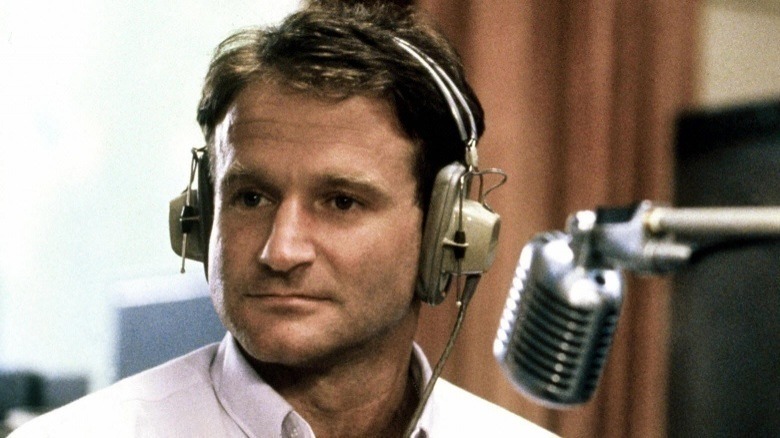
thithtoolwin
The truth was that Cronauer left Vietnam when his tour was officially completed. He was never kicked out, as the film suggests. Other experiences shown in the movie were also made up to make it more interesting.
"21" Wasn’t Honest About the Blackjack Team
Chances are you wouldn’t recognize the real blackjack team that inspired the movie 21 if you saw them. That’s because the real team members are Asian. Adding to the fiction is the fact that they were not led by an MIT professor. Instead, the group was founded by John Chang, J.P. Masser, and Bill Kaplan.

whatsupmovies
It’s true that many of their ingenious strategies earned them lots of money at the expense of casinos, but many things portrayed in the film never occurred, such as Jeff Ma getting beat up in the restroom. He also never developed a romantic relationship with a teammate.
"Cinderella Man" Unfairly Vilified Max Baer
James J. Braddock’s unlikely victory over Max Baer in 1935 earned him the nickname “Cinderella Man.” His biopic shared the same title. Although nominated three times for an Academy Award, the film enraged Baer’s family over their patriarch’s vilification.

haiphim
The truth is that Baer was quite affected by his opponent’s death. He even raised funds for Frankie Campbell’s family. When Ernie Schaaf died, it wasn’t true that he boasted about causing his demise in the ring. Max Baer wasn’t the evil man Hollywood portrayed him to be.
" The Fighter" Was Not a Full-Fledged Boxing Champion
Micky Ward beat Shea Neary by TKO in 2000 and was later celebrated in The Fighter as a world boxing champion. The truth is that the title he won from the World Boxing Union as a junior welterweight was not considered a full-fledged title.

cinemablographer
One of Ward’s sisters also walked out of the premier after it showed their family in a bad light. None of them were as despicable as the film depicted them to be. Can you imagine seeing a film about a family member’s life and it depicts you as being greedy and selfish?
"The Fourth Kind" Was Deceptive in Its “Truth” Claims
It’s not every day that we hear about multiple abductions implicating the involvement of UFOs, so it’s understandable that such a film would attract a lot of people seeking answers. Apparently, these abduction stories have become a nuisance to town officials in Nome, Alaska, where they supposedly took place.
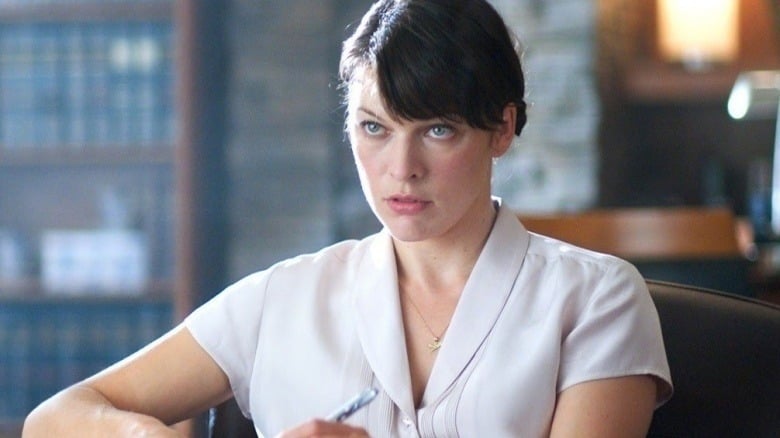
Youtube
Nome Mayor Denise Michels stated that the disappearances are attributed to the excessive consumption of alcohol and the area’s extreme weather. There was never an alien abduction involved despite the show’s “documentary footage” of it.
Undisclosed Tales About Dr. Dre in "Straight Outta Compton"
The biographical story about rap group N.W.A. is missing some unsavory details concerning Dr. Dre. Although the latter has issued a general apology about the matter, his violent acts against TV host Dee Barnes were glaringly left out in the story. She was assaulted by Dr. Dre in 1990 for hosting a segment that concerned Ice Cube’s bitter exit from the group.

thegrio
Omitted too was his mistreatment of his ex-girlfriend Michelle. Director Gary Gray downplayed this and other unsavory events involving the surviving members of the group, saying he considered these things to be irrelevant to the picture.
Hugh Glass Was Misrepresented in "The Revenant"
There is no evidence to back up the idea that frontiersman Hugh Glass had a relationship with a Pawnee woman. He didn’t have a son either, although the movie is driven by his desire to seek revenge for his son’s murder.

The film climaxes when Glass meets John Fitzgerald, whom he pursued after he was left to die in the forest. In reality, he’d let go of his vengeful goal after learning that Fitzgerald had enlisted in the army. He did survive a fight with a bear, though, among other difficulties. So, much of the film is historically accurate.
Conflicting Stories About Tom and Eileen Lonergan’s Deaths in "Open Water"
When you have two divers accidentally left behind in the ocean, there is so much creative space to make anything up, and this is what happened in the film Open Water. The movie depicts what Tom and Eileen Lonergan went through near the Great Barrier Reef.
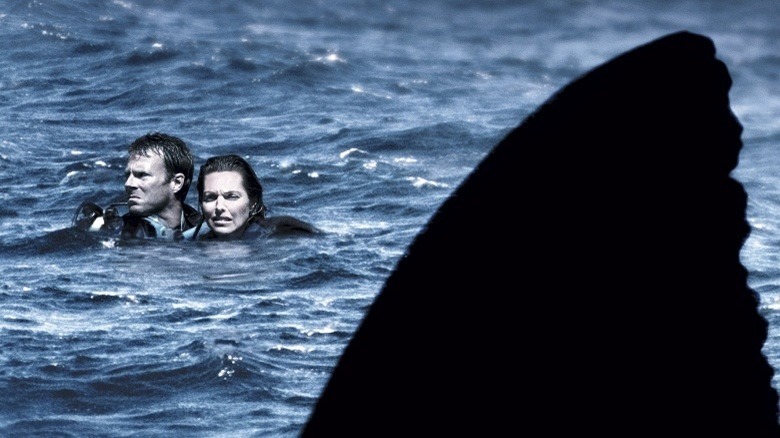
espressogossip
Subsequent discoveries suggest that the couple was never attacked by sharks. Also, a dive slate with Tom’s writing, dated the next day, suggests that they survived longer than the movie depicted. Their gears and dive suits were later on discovered, and they did not bear any damage related to a shark attack. It’s likely that they drowned after waiting so long for help that never came.
"The Perfect Storm" Wasn’t a Perfect Story
What actually happened to the fishing vessel Andrea Gail when it crashed into a combination of a hurricane and two raging weather fronts? Although clearly depicted in The Perfect Storm, the events will always be a mystery. The story was fictionalized by Sebastian Junger, and his book was later turned into the film of the same name.

onedio
No one really knows the details, except that the boat did indeed get devoured by the deep. It was also distressing to Captain Tyne’s family that he was painted as a greedy person because he was locally known for his generosity.
The Truth About the Scams of "Catch Me if You Can"
Film director Steven Spielberg swore that every scam in this movie was pulled off in real life by con man Frank Abagnale, who began swindling people at the age of fifteen. But Abagnale himself denies he ever posed as a replacement French teacher. This was the first scam shown in the film.

youtube
He also never called up Carl Hanratty, an FBI agent played by Tom Hanks, on Christmas Eve. It just doesn’t make sense. The Hanratty character wasn’t real either. The personality was the result of a blending of multiple FBI agents who spent time trying to track down Abagnale.
Israel’s Secret Revenge in "Munich"
The Israeli government seeks revenge for the killing of its athletes during the 1972 Summer Olympics by sending out a team led by Avner Kaufman code-named Operation: Wrath of God. Contrary to the events shown in the film Munich, the targeting of Black September was actually done by several hit squads, and not just by Kaufman’s.

lovefilm
The operation had several mishaps too, but the movie skips mentioning all this collateral damage. To avoid responsibility for the operation, Avner Kaufman (played by Eric Bana) was made to resign from Mossad (the Israeli intelligence agency) before executing their revenge plot.
Ron Woodroof Was Misrepresented in "Dallas Buyers' Club"
In the movie, rodeo cowboy Ron Woodroof smuggles unapproved medicines to treat himself and others suffering from AIDS, leading to the creation of the Dallas Buyers’ Club. The real Woodroof was an electrician and merely a fan of the rodeo. Contrary to his fictionalized character’s misogynistic and homophobic nature, the real Ron was never known to be that way.
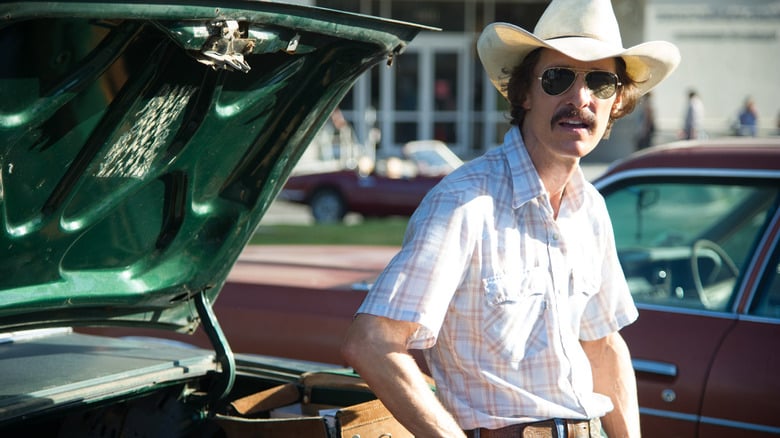
purepeople
The characters Eve Sak (his sympathetic doctor friend) and Rayon (a business associate) have no real-life equivalents. They were crafted, just as some aspects of his personality, for dramatic effect.
"Pain and Gain" Padded Out the Sun Gym Gang
In real life, a bunch of bodybuilders, all members of the Sun Gym Gang, dressed up as ninjas in one of their multiple attempts to kidnap a businessman (Marc Schiller). This was the basis of the movie Pain and Gain, but it was filled with many fictional characters – as if the real deal wasn’t funny enough!

adorocinema
Dwayne Johnson plays the role of Paul Doyle, who’s a compound of three people. The victims’ and the kidnappers’ personalities were made to fit into the narrative, bumbling mistakes and all. The movie ends with a fictional pursuit to the Bahamas with gang leader Daniel Lugo losing a toe.
A Violent Jimi Hendrix
Jimi: All Is By My Side, a biopic released in 2013, failed to get the American musician’s fans on its side due to its many inaccuracies. First off, the rock legend wasn’t featured in the film playing his original songs.

youtube
That didn’t go down well with music lovers and Hendrix die-hards. To make things worse, he was portrayed as an abusive boyfriend to Kathy Etchingham, who denied being smacked in the head with a payphone and described the rock legend as a gentle person.
Intoxicated Whip Whitaker in "Flight"
Whip Whitaker, a boozy pilot, prevents his aircraft from crashing by deftly maneuvering the aircraft upside-down. He saved all the passengers who couldn’t thank him enough. They would thank him more if they could, except Whip doesn’t exist.

themovieblog
Flight was loosely based on Alaska Airlines Flight 261’s crash. Records do reveal that its pilot courageously rolled the aircraft as a last-ditch effort to prevent a nosedive. However, his effort failed, and the crew and all the passengers died in the crash.
A Suspect Frank Hopkins in "Hidalgo"
Frank T. Hidalgo’s autobiography tells of his incredible experiences as an endurance rider in America and describes his friendship with Buffalo Bill and Black Elk. The movie Hidalgo recounts his challenges competing against Bedouins in the Ocean of Fire. It has beautiful scenes and sweeping landscapes – an ideal match for what critics describe as Hopkins’ delusions.

onedio
According to a group of equestrians, criminologists, curators, and other experts, there is no way these tales are autobiographical. There is no existing record that says he was a member of the cavalry, and the Ocean of Fire was probably a product of his inventive mind.
The Mis-telling of Pocahontas' Story
The Disney animated classic, Pocahontas doesn’t go out of its way to claim that it’s an authentic retelling of history; however, the film is riddled with historical inaccuracies. In reality, Pocahontas was the nickname given to the girl named Matoaka. In 1607 when the Virginia Company and John Smith arrived, Matoaka would have only been a 10 or 11 year old child.

The sequel of the film attempts to to unwrite the romantic inaccuracies between Pocahontas and John Smith by introducing Pocahontas’ true husband, John Rolfe. While the character of Pocahontas is a beloved character known for her bravery, the film overall depicts the historical events through a Western lens and thus could use a new perspective by today’s standards.
"Cool Runnings" Isn't A Cinderella Story
For an inspiring Olympic underdog story, look no further than 1993’s Cool Runnings. This film depicts the story of the Jamaican bobsled team of 1988 to a dramatized extent. For example, many of the characters are fictionalized, including Coach Irv. Furthermore, the team itself wasn’t made up of four sprinters from Jamaica. Instead, two Americans selected army recruits in an attempt to put together a bobsled team.

onedio
To increase the drama and tension within the film, Cool Runnings made it seem as though the team were outcasts when in fact they were openly welcomed by other athletes and even borrowed some equipment from their opposing teams. Ultimately to create the charming tale, a few fabrications had to happen.
The Truth Behind "The Greatest Showman"
The Greatest Showman became an instant hit with it’s catchy musical numbers and star-studded lineup including Hugh Jackman, Zack Effron, and Zendaya. The film is based on the creation of the Barnum & Bailey Circus and follows the life of P.T. Barnum. However, while the film puts Barnum in a positive light as a supporter of the downtrodden, in real life he was known to expl0it marginalized people for profits.

The romantic relationship that blossoms between Zack Effron and Zendaya’s characters is also fabricated. Their characters serve to made Barnum appear supportive and racially tolerant when in actuality he was known to exploit racial stereotypes for money. While the film sugarcoats history, turning it into a magical and inspirational musical, the true story behind the film is much darker and despicable.
Alan Turing's Character in "The Imitation Game"
The Imitation Game tells the story of Alan Turing during World War II as he sets out to crack the Enigma Code of the Germans. However, the true story differs from what you see on screen. The film enjoys giving Turing all the credit for the code-breaking success when in actuality Polish scientists greatly assisted in the feat by cracking earlier codes and helping Alan Turing with his code-breaking machine.
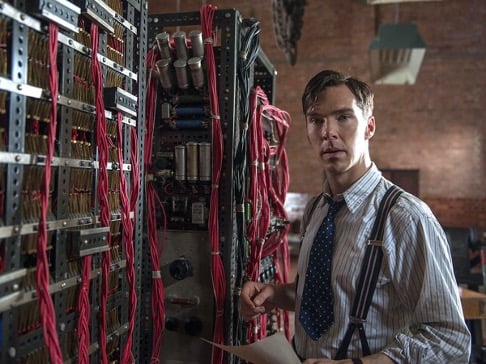
onedio
The film also creates an untrue storyline involving Turning discovering a Soviet spy within his team. In the film, he ends up covering for the spy as the spy threatens to tell the world of Turing’s homosexuality, which was a crime at the time. This is however untrue as covering for a spy would be considered treason, a much worse crime.
"Lawrence of Arabia" Is Based On a Biased Memoir
The critically acclaimed classic film, Lawrence of Arabia may be well-known but wasn’t well-researched. For starters, the depiction of Arabs and Arabs soldiers was largely misrepresented. The film depicts them as tribal and undisciplined when in actuality they were considered classy, educated, and well-trained at the time.

tumblr
Furthermore, Lawrence as a character is depicted as larger than life. He reaps the benefit of being portrayed as a pivotal historical figure largely due to his memoir The Seven Pillars of Wisdom, which the film is based on. In actuality, Lawrence was just a singular figure out of many intelligence officers who also were pivotal to the story. Lawrence was simply the one to write the book, allowing him room to inflate his character and show himself in the best light.
